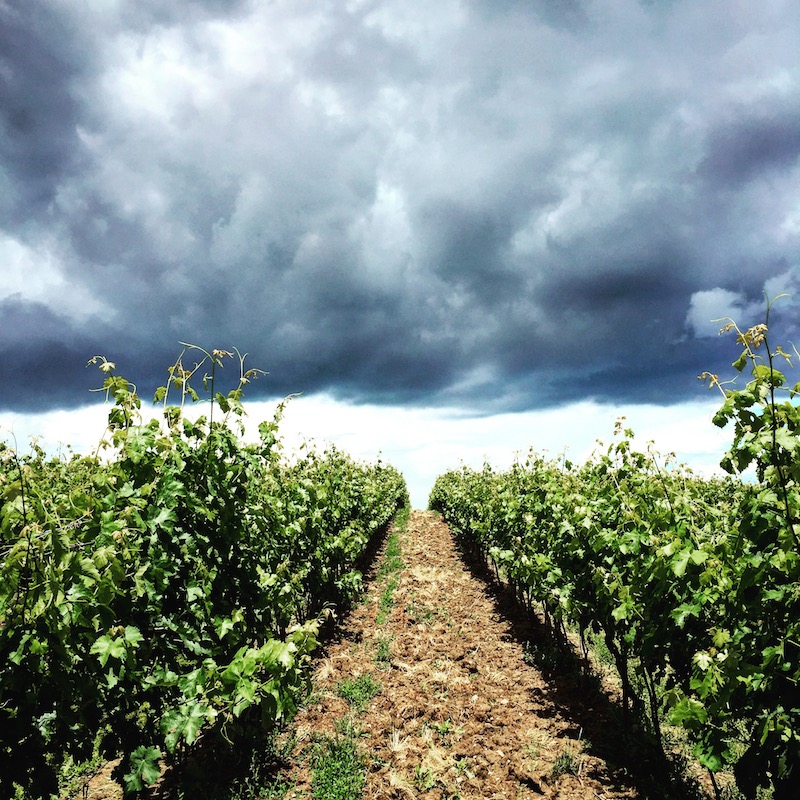
By Rick VanSickle
More than one winemaker has called the 2017 Ontario grape harvest nothing short of a “miracle.”
Mother Nature threw everything she had and then some at vineyards throughout the main grape-growing regions of Ontario, yet somehow, in the end, it was one of the largest crops on record, with reports suggesting it was even bigger than the record-smashing 2013 harvest, and the quality across the board was good to excellent with many varieties.
How it got there was a feat worthy of Houdini, or, as Stratus Vineyard winemaker JL Groux says: “The 2017 harvest in one word is … miraculous.”

Heavy rains pounded all growing regions in Ontario throughout the summer. Significant rainfall in June caused flooding in Wellington (Prince Edward County) and a state of emergency was declared. Both southern and south-eastern Ontario had heavy rainfall in July and August. Severe weather was also noted in Lake Erie North Shore at the end of the August, but steady rain continued to be the most notable event of the month. Hail was also a problem in Niagara, especially on the Beamsville and Twenty Mile Bench.
In short, it was looking grim by the end of August that anything of value could by salvaged from the 2017 vintage.
Then September arrived, and Ontario welcomed steady, unseasonably warm and dry weather conditions that continued through October and November. It was a timely and much needed departure from the wet summer season.

Said Vineland Estate winemaker Brian Schmidt of the 2017 growing season: “In the end, the stars of our region would shine again both in terms of grapes and winemakers. From my vantage point, I have tasted stunning whites, with crisp, focused acidity the hallmark of our cool climate, and bright, elegant, juicy reds. At this early stage I am (almost) prepared to say ‘some of the best Cab Franc that we have made will have come from 2017.’ ”
According to VQA Ontario, the rainy summer had moderated expectations for harvest, but a hot, sunny and dry September gave the grapes in all three growing regions abundant opportunity to ripen and fully develop their flavours. Conditions during harvest were ideal across the province. October continued to be warm and dry allowing for ripening of later maturing varieties and harvest proceeded into November, with processing as late as the third week. On the heels of the regular harvest, temperatures dipped below -8 C in mid-December, allowing the harvest of grapes destined for Icewine to begin.
Ontario Wine Expectations
Overall, according to VQA, it was a good vintage. The weather patterns affected the growing cycle, with slowed development at the beginning of the season, but then caught up very quickly in the late summer and fall. With ripening moving rapidly, wineries spent considerable effort keeping up with Mother Nature and picking at the right moment. The challenges of ripening long season varieties that often arise in this type of year were completely banished by the very late onset of cooler weather. Ontario’s VQA producers enjoyed a full crop and their wide range of grape varieties and styles should show well in 2017.
Wines In Niagara asked several industry insiders for their thoughts on the complicated 2017 harvest. Here is what they had to say:

Michèle Bosc, VP Marketing, Château des Charmes Estate Winery,
St. Davids Bench, Niagara:
“2017 was the summer of rain. Harvest was delayed by a couple of weeks but the net result was a bumper crop showing good quality. Sauvignon Blanc came in a month later than normal, and then all the reds started to come in one after the other. It felt like 3D chess in the cellar.
We just tasted our aromatic whites this week (first week of March), planning for spring bottlings, and what a revelation — bright, crisp, and fragrant whites. They will be the stars.
Early samples of Pinots showed higher in acidity with generous fruit forward notes and finesse. We’re looking forward to watching them evolve.
We’re likely going to be declassifying our big reds. They did ripen OK just not an exceptional, single vineyard year. They will be tremendous value when they hit the street in a couple of years.
Bottom line: the team thought of it as the vintage that you want to forget, but we were actually surprised and delighted with the results!”
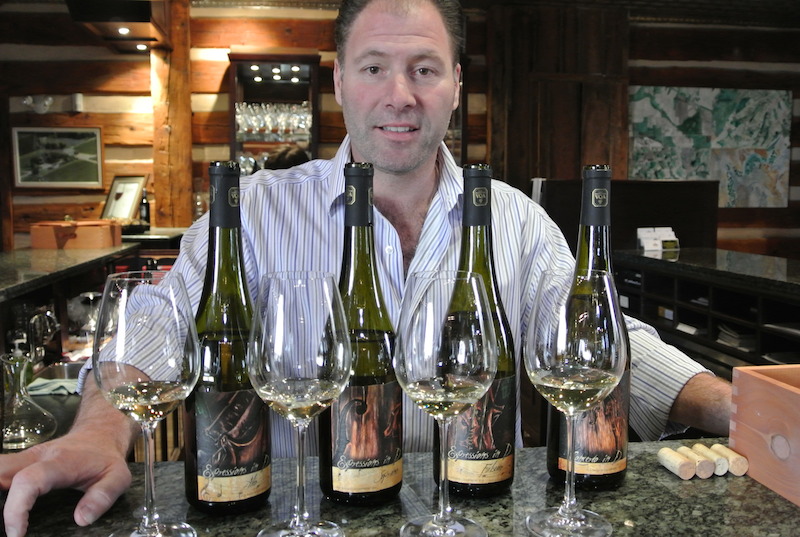
Brian Schmidt, winemaker Vineland Estate Winery,
Twenty Mile Bench, Niagara:
“Those that love Tchaikovsky would understand and appreciate the emotional roller coaster that was 2017.
A calm entrance that remained for only a few weeks … the spring was early, dry and near perfect!
Then all hell broke loose! The rain challenged us at every turn. For months we could not rest easy. The pressure of seemingly endless rain was in stark contrast to 2016 where we were begging for rain (the two summers could not have been more different). At the end of August I was almost convinced the 2017 vintage would be a disaster! Then … IT STOPPED … as if almost on cue. Sept. 1 was the turning point; the clouds cleared, the sun dried the saturated ground. The vines given new energy from the warmth of the sun spent the next two months calming the unripe/acidic fruit hanging on the vines.
Harvest commenced nearly 30 days later than usual. For most wineries hitting their stride in early Oct. would mean that we would have a late season. We were indeed harvesting grapes almost into Dec. This would present any number of challenges to a winemaker — cold temperatures make for difficult fermentations, especially for those that do not have the capacity to warm the vessels.
In the end the stars of our region would shine again both in terms of grapes and winemakers. From my vantage point, I have tasted stunning whites, with crisp, focused acidity the hallmark of our cool climate, and bright, elegant, juicy reds. At this early stage I am almost prepared to say they are some of the best Cab Franc we have made will have come from 2017.
So, just as Tchaikovsky’s life was marked with emotional turmoil, yet he is known for some of the most enduring pieces of music, the wines from the 2017 vintage will most certainly have earned their rightful place in the history of Ontario wine.”
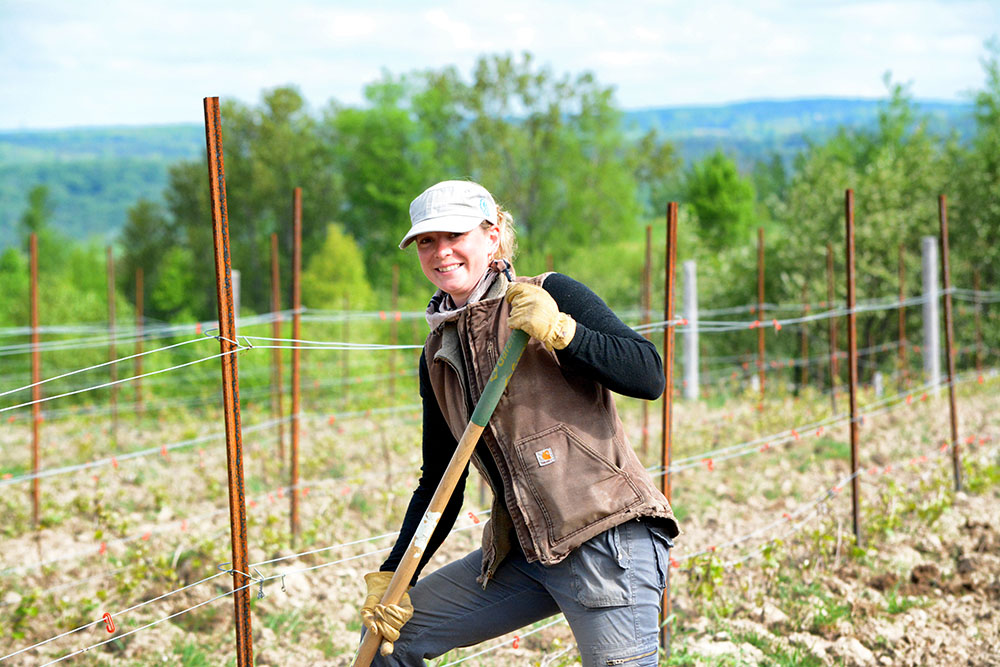
Shauna White, Vineyard Manager and Winemaker
at Adamo Estate Winery, Hockley Valley:
“I will speak to the vintage conditions here in Mono (Hockey Valley) at Adamo Estate where I spent the spring and summer in our vineyard. I will also expand to include the harvest conditions for the Niagara fruit we purchased, as I cannot speak precisely to the conditions throughout the growing season in Niagara.
April was warm and dry and gave us hope for an early start and longer season. We started de-hilling early and bud break in my geotextile covered rows started April 27, which was 24 C feeling like 30 C with humidity. (Earliest date since my arrival in 2014).
Then came May and the frosts. The geotextile blankets went back on for frost protection and did their job, while the vines continued to grow beneath. All my vines under soil were not pushing growth yet. De-hilling of the vineyard was completed by May 20 and then came the relentless rains and winds. It was difficult to get in to spray all season and we had to, every chance we could, because with all the wetness and humidity the disease pressure was high.
June arrived with more rain and wind and with 32 mm on June 22 and a record amount of 75mm in 12 hours on June 23 here, we had flooding.
Heavy rains and cooler temperatures continued in July along with gusty winds which played a big role in poor fruit set for the later flowering varieties. August started with rain but as the month went on the temperatures increased along with sunny and dry weather. All varieties were on track for a “normal” ripening time but were 2-3 weeks behind the previous hot and dry 2016. September came with hot and dry weather for continued ripening and sugar accumulation, which was in our favour across the board for all varieties.
The results of these growing conditions over the last three months include a preservation of acidity, a heavier crop from the rain throughout the growing season and bigger berries. However, the sun and warm temperatures ripened the crop, which held acidity very nicely and sugars continued to accumulate throughout September.
Harvest in September and October (both in Niagara and Mono) was fantastic, little rain provided the option to let things hang until the flavours were ideal and phenolic ripeness came, allowing a great balance of sugars and acid. There was no need to rush any pick dates and the grapes hung nicely through any rainy weather we had during these two months.
Any varieties left to pick in November were also well balanced, a cold spell in early-mid November caught us a little off guard but did not hurt any varieties still hanging (Cab Franc, Cab Sauv, Petit Verdot, and, in Mono, Vidal). Top varieties for the vintage from my point of view are: Chardonnay, Riesling, Gewurztraminer, Viognier, Pinot Noir, Gamay Noir, Merlot and Cabernet Franc.”
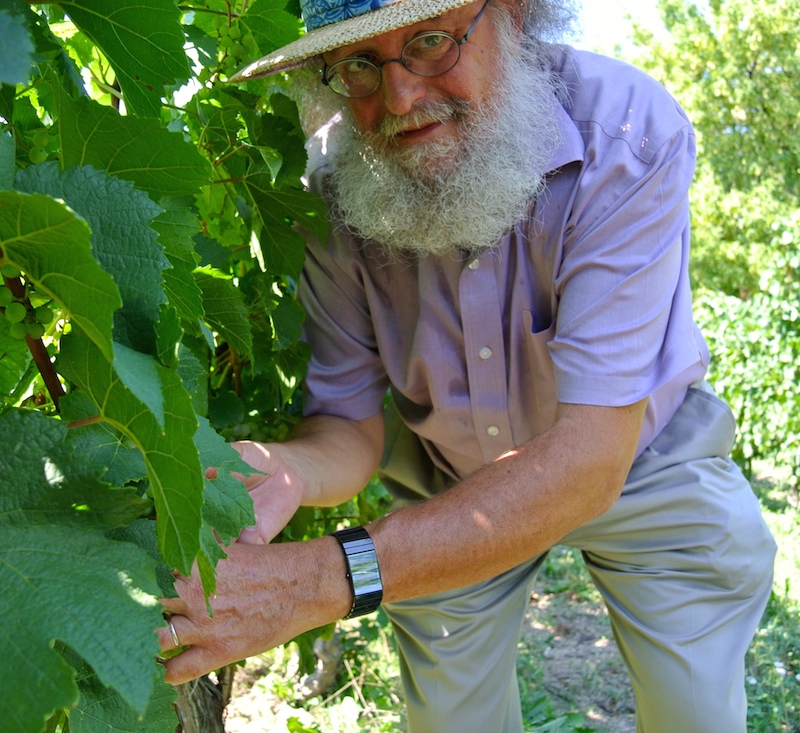
J.L. Groux, winemaker Stratus Vineyard, Niagara-on-the-Lake:
“The 2017 harvest in one word is … miraculous.
Coming from a very difficult climatic situation until mid-August to a great fall all the way to November.
Even the -8 C frost at the end of November was welcome as it helped to remove the green taste from the Cabs in a very quick and spectacular way. This is confirming other previous anecdotal stories on the benefits of deep frost on Cabs from B.C. and Ontario. In fact, Andy Reynolds from CCOVI (Brock), now confirms this new discovery from his own research, but so far no one has a scientific explanation.”

Paul Speck, president of Henry of Pelham Family Estate Winery,
Short Hills Bench, Niagara:
“2017 was a very unusual vintage. Another mild winter meant the vines were very healthy. Lots of rain in the spring ensured a large and healthy crop.
Too much rain during July and August made us all nervous about the size of the crop and the ripeness levels of the reds. Weather I have never seen before started in the last week of August. Hot, dry and sunny days with virtually no rain for 4 weeks! The grapes sized beautifully and ripened and the reds in particular are some of the best wines we have ever made featuring fantastic depth, elegance and structure. (These are) wines for aging.
The whites have great balance, length and acidity. 2017 should go down as one of the best vintages ever.”
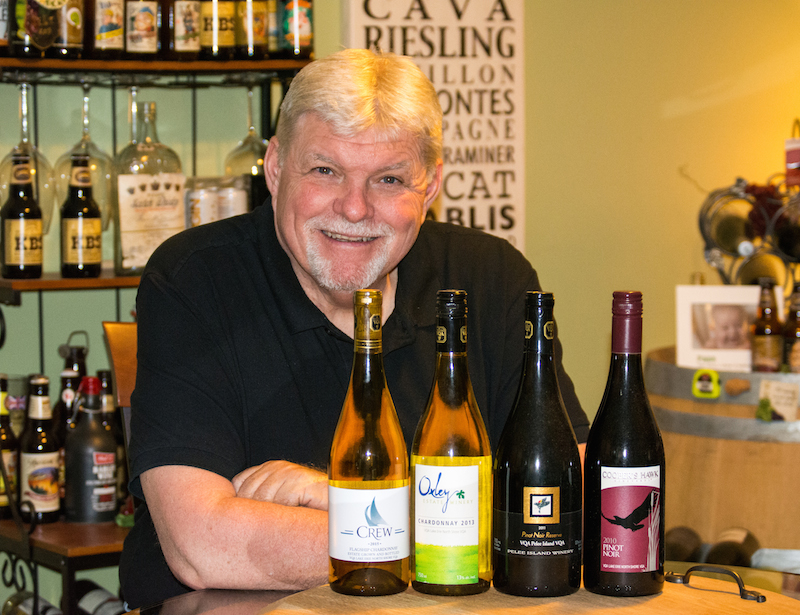
Gary Killops, wine journalist based in south-western Ontario,
Lake Erie North Shore:
“2017 is looking good for both the red and white wines in Lake Erie North Shore.
LENS experienced record rainfall in the spring and summer (less than Niagara but still more than normal). The year ran cooler than normal until the end of September.
The cooler temperatures appear to be resulting in exceptional aromatic white wines (better than 2016).
Chardonnay and Pinot Grigio grapes that were harvested before the September heat are really showing well – very clean, fresh and aromatic.
Everyone is very pleased with the 2017 Pinot Noir and Cab Franc wines. Great colour and when left to hang during the fall heat low herbaceous-ness on the cabs.
Most wineries are reporting a larger than normal crop this year. Perhaps due to the record rainfall?”
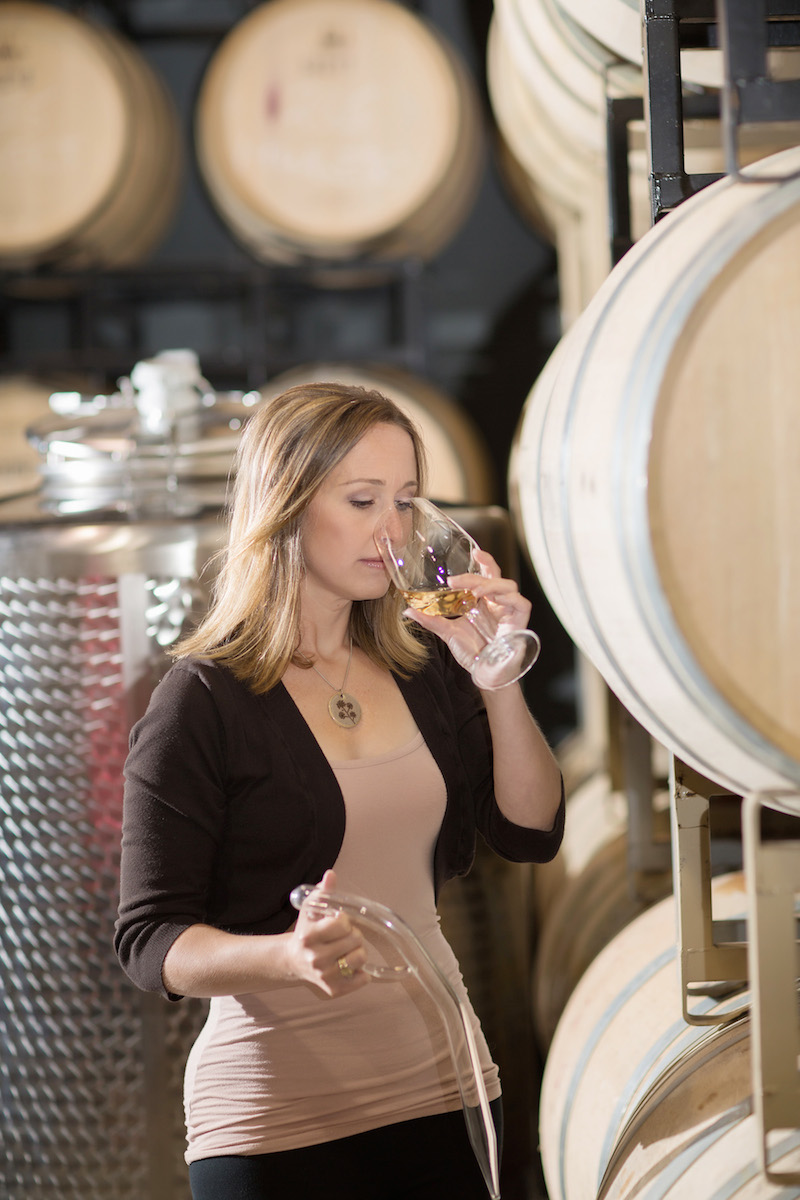
Emma Garner, winemaker Thirty Bench Winemakers,
Beamsville Bench, Niagara
“2017 – what a wild ride! The growing season consisted of pressures of all kinds – disease (powdery mildew, sour rot), flooding, inability to get tractors into fields because of the rainfall, and then when the fall came and the clouds parted, new pressures arose … drought (!), lady bugs, record high brix, record high acidities and record high tonneages!
We managed to surf the wave of unknowns and anomalies and have produced some of the best Rieslings that I have ever tasted. The cooler temperatures in August resulted in slower ripening and more intense flavor development. The degradation of acid was much slower which allowed for a longer picking window and an increased amount of aromatic complexity. The bigger aromatic varieties (i.e. Gewurztraminer etc.) have surprising weight and varietal correctness.
We are starting to assess our Pinot Noir and Chardonnay blends tomorrow and I am nervously excited. The Chardonnay has picked up weight over time and the Pinots were able to reach ripeness levels without high levels of disease. It will be interesting to taste them all blind tomorrow to see where they landed.
The Bordeaux varietals achieved higher than average Brix – something that I would have never thought possible as we rounded the corner into September. Cab Franc will be a bit of a sleeper – high brix resulting in high alcohols. I’m hopeful that the flavours and structures will help to balance this out.
Within our wineries we finished picking our Cab Sauv on Nov. 21 and then were picking icewine on Dec. 14 – the shortest window ever between table and icewine harvests! Another one for the record books.
At the end of it all, we survived another one! Just when you think you understand the ‘rules’ of viticulture and winemaking in Niagara you experience a vintage like 2017… where one is always learning, always developing new techniques and methods of coping with the challenges that come your way.”
The Ontario Wine Vintage Charts
going back to 1998
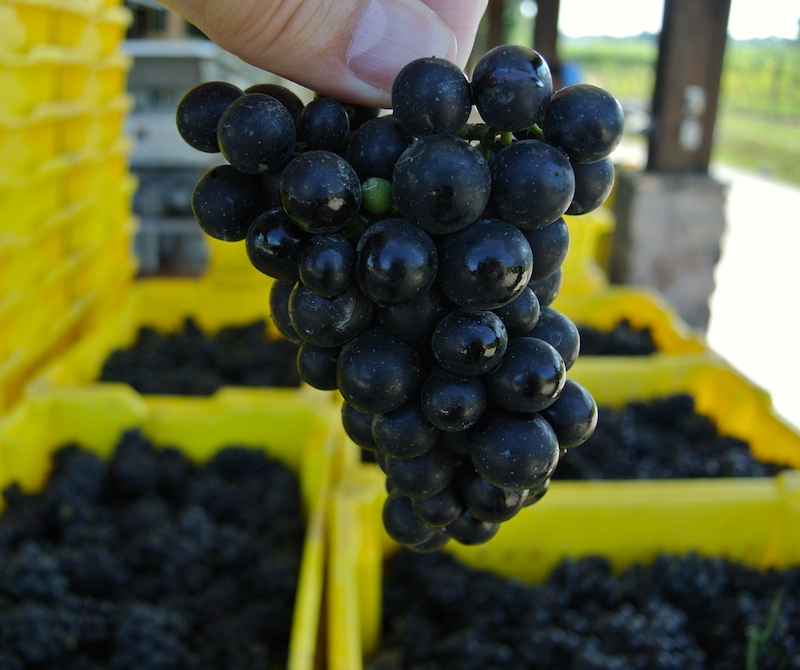
We have been publishing this vintage chart for Ontario wine for the past eight years on this website. It was originally commissioned by the now defunct Wine Access magazine and updated on an annual basis. We have tried to keep it current and relevant.
When the chart was first conceived by Wine Access the ratings were based on a seven-star scale. No one is sure why, but we have continued to rate the vintages that way until now. All the ratings have been updated to a more practical 10-point scale.
New to the chart is a “tentative” rating for 2017, a more informed rating for the 2016 vintage and updates on all the other vintages back to 1998.
As with any rating system, the score is less important than the description of the vintage. That is especially true when discussing a region such as Ontario where so many varieties of grapes are grown. What’s good for the Bordeaux varieties isn’t necessarily good for aromatic whites and tender red grapes in any given vintage. It is rare that, in terms of wine quality, a year is a total failure in Ontario, unlike vintages in say, Burgundy or Bordeaux. Please keep that in mind when reading our assessments.
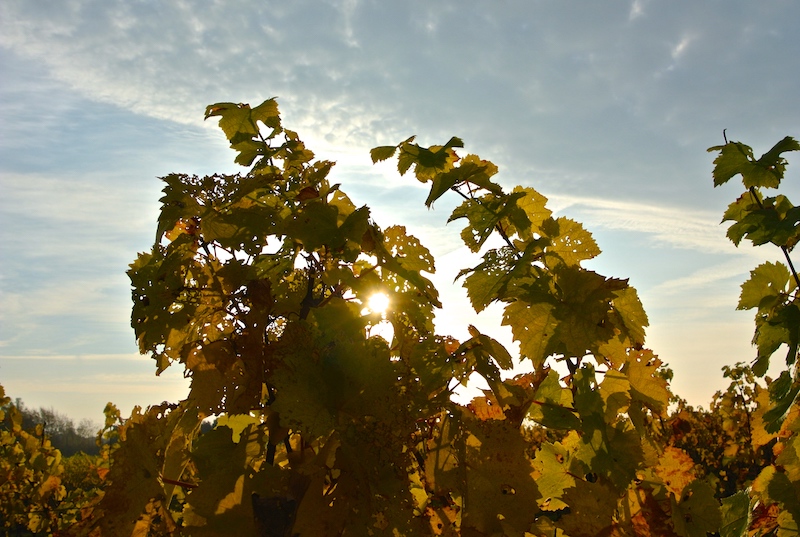
2017 ★★★★★★★★ (8 out of 10, tentative)
All summer long it looked grim for the 2017 grape harvest in Ontario with cool, wet weather and the odd hailstorm thrown in very good measure. Then Sept. 1 rolled around, bringing extended heat and sunshine for one of the nicest falls on record and one of the latest harvests on record. The extra hang time for the grapes provided some needed ripening (in some cases right into December) and turned a potentially disastrous vintage into a fairly good one. It was also a record harvest in terms of tonnes of grapes harvested. Initial reports suggest excellent quality for aromatic white wines and good to excellent results for Pinot Noir, Gamay and Cabernet Franc. A few wineries have said they will declassify their top Bordeaux-varietal-based red grapes (so watch for the lower tiered reds to benefit from those grapes). We are starting to see the first wines from 2017, mostly rosés, and I have tasted aromatic whites and some reds in tank, and have been impressed with the quality. It would appear Ontario has fully recovered from the back-to-back winter-kill years of 2014-2015. Now, wouldn’t a normal, routine vintage be nice in 2018?
Whites: Not released yet
Reds: Not released yet
2016 ★★★★★★★★★ (9/10)
Winter in 2016 was mild and drama-free for grape growers in Ontario. By mid-May, the vintage settled into a sustained pattern of much drier and slightly warmer than normal. Drought in some areas was a concern in some parts of Ontario.
The hot, dry conditions prevailed throughout August, with lots of sunshine and just enough rain to keep drought conditions from becoming too severe. Targeted irrigation was required to sustain the young vines planted to fill in sporadic damage from the cold 2014 and 2015 winters. Weather conditions were very similar in all appellations with the exception of a short but major rain event in Lake Erie North Shore in September. In all, the growing season presented outstanding opportunities for grape quality across Ontario.
Harvest was early in all regions for all varietals and was stress-free with dry conditions and limited disease pressures. It was the perfect recipe to provide an excellent vintage. Virtually all grape varieties performed well in 2016 and were picked in pristine condition. This is a year to buy and hold those bigger red wines (Bordeaux varietals, Syrah, etc.) that will age gracefully for 10 years or more. The Chardonnays are generally more robust than in cooler years and Pinot Noirs more complex. Rieslings will be riper and have immediate appeal. Across the board, this is a great vintage along the lines of 2012, 2010 and 2007 and a good bounce back from 2014-2015, even if the tonnage was not quite back to normal. You can buy most varietals and blends with confidence.
Whites: Drink/hold Rieslings, Pinot Gris, Sauvignon Blancs; hold Chardonnays 1-3 years
Reds: Drink Gamays, hold Pinots 2-3 years, hold on to bigger reds (save some for extended cellaring). This should be a break-out year for appassimento-style reds
2015 ★★★★★★★ (7/10)
This was the second-half of two brutal winters that caused a great deal of hardship and soul searching for winemakers and grapes growers in Ontario. Record-breaking cold in the winter of 2015 was not what was needed after the horrible conditions of 2014. Many acres of grapes needed to be replanted and wineries had to make tough decisions of what not to plant in their terroir.
The summer growing season brought good conditions with few major storms and sunny warm weather in all appellations. Niagara was slightly drier than Prince Edward County and Lake Erie North Shore. September weather settled nicely into warm beautiful conditions for the start of harvest and, except for some rainy periods in October, fall weather was favourable.
Harvest conditions were excellent and good weather prevailed for much of the harvest period. Overall, grape production across the province was moderately less than normal but slightly more than 2014 when tonnes harvested was substantially less than previous years. Cold temperatures in January and February resulted in markedly reduced crop yields in Lake Erie North Shore, and less than full production in Niagara Peninsula and Prince Edward County. Tender grape varieties in particular were in short supply.
The irony of the vintage, devastating winter kill aside, is that it all averaged out by harvest and created conditions that allowed Ontario’s classic varieties — Riesling, Cabernet Franc, Pinot Noir and Chardonnay — to show well. Look for good concentration of flavours for the longer ripening varieties that profited from the warm, dry summer and fall. In all, 2015 wines fared much better than 2014 wines, despite both vintages suffering through some of the most severe winter conditions seen in Ontario.
Whites: No rush to drink up Rieslings and Chardonnays, start drinking the rest
Reds: Hold Pinot Noirs and Cabernet Francs for a couple more years, start drinking red blends and drink up the rest
2014 ★★★★★★ (6/10)
The year was highlighted by a brutal winter that ultimately caused wide-spread bud damage leading to vine death in several varieties including (but not limited to) Syrah, Merlot, Semillon and Sauvignon Blanc. Couple that with a cooler year that always seemed a couple of weeks behind, varieties such as Cabernet Sauvignon and Cabernet Franc were tested. It is not a year for big red blends, but, on the bright side, the early-ripening Riesling, Chardonnay, Pinot Noir and Gamay enjoyed a very nice harvest and should provide some decent wines from the vintage. Look for de-classified reds from wineries with a trickle-down portfolio (or a larger than usual supply of rose), good to excellent Riesling, Pinots, Chards and Gamays. I have spoken to many winemakers who did not make their top red blends in 2014 and many others who are replanting their damaged and dead vines with varietals more suited to all weather conditions in Ontario. Wines from Prince Edward County weren’t hit as bad as Niagara and Lake Erie North Shore for two reasons: They bury their vines and they don’t grow that many varietals outside of Chardonnay and Pinot Noir.
Whites: Drink soon or hold Chardonnays, Rieslings
Reds: Early drinking reds, for the most part
2013 ★★★★★★★½ (7.5/10)
It was a late start to the season with every kind of weather imaginable tossed into the equation. Hot, cold, wet, dry … it was a rollercoaster ride, especially in Niagara. When it was all said and done, the season played to each region’s strengths — Chardonnay, Pinot Noir, Riesling and Cabernet Franc in Niagara, Pinot and Chard in Prince Edward County and early ripening varieties in Lake Erie North Shore. Most aromatic whites across the board have shown promise in 2013. Quality is spotty for the other Bordeaux varieties, Cabernet Sauvignon and Merlot, and anything that was left out on the vine to ripen late. I would call it a typical vintage for Niagara that plays to the strengths of what the region does best but some of the top bottlings, especially in big reds, have been de-classified. It was a record crop both for table wines and icewine grapes, which could come in handy for 2014 after a severe January cold snap caused wide-spread damage to vines, mostly in Niagara and Lake Erie North Shore.
Whites: Drink now or hold Chardonnays, Rieslings
Reds: For near-term drinking, for the most part
2012 ★★★★★★★★★★ (10/10)
The mood in Niagara during the early harvest of 2012 was one of pure joy. Ripe fruit in pristine condition after a long, hot summer and early fall sent grape pickers into the vineyards in mid-August to harvest early-ripening varieties. It was one of the earliest harvests on record for all varieties with only a slight hiccup during a brief rainy period in September. Reports from all regions in Ontario indicated a near-perfect season with the Bordeaux-style red grapes leading the way. Winemakers were also excited by the white grapes, especially Chardonnay, Riesling and Sauvignon Blanc, that all showed both juicy ripeness and natural acidity. The largest icewine crop was netted since 2007, an indication that Canada’s most famous export was set for a rebound in 2012. Since first writing this report I have now tasted most of the key 2012 reds from this vintage and have re-evaluated many of the whites. I have upgraded the rating from 9 stars to a perfect 10 because I feel strongly that 2012 will prove to be the best vintage Ontario has ever encountered to date. It’s not just the big red wines that are showing such promise, but all varieties across the board. Sort of unheard of until now. My suggestion, buy what you can from 2012 and cellar what you can, it’s as good as it gets in Ontario. Drink 2013s and 2014s while you wait.
Whites: Drink now, or cellar 2-4 years especially Riesling. A little less for Chardonnay and Sauvignon Blanc.
Reds: Cellar 5 years or more, Bordeaux blends 5-12 years
2011 ★★★★★★½ (6.5/10)
The extremely wet fall, during the peak of harvest for most varieties, has meant careful buying strategies. Quality varied from winery to winery, and it depended a lot on picking decisions that were made. Pinot Noir, Gewürztraminer, Baco Noir and Cabernet Franc escaped the worst of the wet harvest, while Chardonnay was hardest hit. Late-harvest and icewine Rieslings were also affected by late-season rain. That being said, there are some very nice wines from 2011. Shop carefully. I have tried a few 2011s recently and down-graded my original rating by a half-point.
Whites: Drink now or hold Rieslings up to 2 years
Reds: Start drinking them up
2010 ★★★★★★★★★ (9/10)
Winemakers across Ontario have never been happier with a vintage. The harvest started in the extreme heat of August and continued without concern through October. The red varieties, especially cabernet franc, cabernet sauvignon and merlot, are some of the best grapes grown in Ontario and should age gracefully. Even some of the whites show wonderful complexity, without being too flabby and soft. You can consume most Ontario wines from 2010 with confidence.
Whites: Drink now or soon
Reds: Cellar up to 5 years for Bordeaux varietal blends
2009 ★★★★★★★ (7/10)
In many ways, 2009 was similar to 2008. A cool, wet summer put the harvest up to 14 days behind for most red varieties, but a long, warm fall saved the vintage. Aromatic whites, particularly many exceptional Rieslings, are the stars of the vintage, along with the fabulous pinot noirs that are proving to be the best in recent memory. Bordeaux varieties had trouble ripening, especially cabernet sauvignon. Many wineries didn’t make their top red wines.
Whites: Drink now, Rieslings can cellar for a couple more years or drink now
Reds: Drink now or cellar 2 years (especially Pinot Noirs)
2008 ★★★★★★★½ (7.5/10 )
It was a wet growing season in Ontario, especially in Niagara and Prince Edward County, and grape ripening in all appellations was a challenge. The quality of this vintage depended entirely on vineyard management. Whites and cool-climate reds (pinot noir and gamay) fared better than other varieties. The ’08 rieslings and other white varieties are superb, but consumers should be selective with the reds. Complex chardonnays are the stars of the vintage.
Whites: Drink now or cellar 1 year or less for Rieslings (or more if you like that nice vein of petrol)
Reds: Drink now
2007 ★★★★★★★★★½ (9.5/10)
The growing season across Ontario was just about perfect. The 2007 vintage was the best in Ontario’s history, up to this point. It was warm, dry and ideal for extended hang time on the vines. The 2007 whites showed beautiful concentration of flavour, but lacked acidity and fell apart quickly. The red wines are proving extraordinary, especially with some age on them, from variety to variety. Look for rich, ripe, concentrated Bordeaux-style reds built to last.
Whites: Drink now, fading fast and drying out
Reds: Drink now or cellar 2 years or more
2006 ★★★★★★★ (7.5/10)
Not as wet as 2008, but still humid and slightly cooler than normal. The mood was upbeat in Ontario as vines recovered from the terrible winterkill of 2005. There was plenty of sunshine in August, but a wet September meant wineries had to employ good vineyard selection. It was a decent year for Chardonnay, Riesling, Merlot, Gamay, Cabernet Franc and Pinot Noir, and a great year for icewines.
Whites: Drink now
Reds: Drink now
2005 ★★★★★★★ (7/10)
This was a disastrous year. An extremely cold winter killed any hope for a healthy vintage, with more than half of the vintage wiped out. Many producers didn’t have enough wine to sell and suffered hefty financial losses. Both Lake Erie North Shore and Pelee Island fared better than Niagara. The irony of the vintage was that, even with a tiny crop, what was grown ended up being pretty good.
Whites: Drink now
Reds: Drink now
2004 ★★★★★★★½ (7.5/10)
The 2004 vintage was a major relief for producers following the bad winter of 2003. Conditions improved immensely, and vines recovered from the previous winterkill. Some of the stars of the vintage include Riesling, Chardonnay, Pinot Noir, Cabernet Franc and Gamay. Tender varietals didn’t fare nearly as well.
Whites: Drink now
Reds: Drink now
2003 ★★★★★★★½ (7.5/10)
This vintage had it all: a horrible winter resulting in another short crop (a reduction of 45 per cent of all vinifera vines), the reappearance of the Asian lady beetle (which causes a nasty taint in wines) and, despite all of that, the emergence of some mighty fine whites. The rating for this vintage is really split between red and white wines: a 6.5 for red wines and an 8.5 for whites.
Whites: Drink now
Reds: Drink now
2002 ★★★★★★★★★ (9/10)
A lot of winemakers rank this vintage up there with 2007 and 1998. This vintage was highlighted by severe drought conditions in all Ontario appellations for most of the summer. The resulting grapes ripened beautifully, with small, concentrated grapes, high sugar levels and tannins. A tasting of top 2002 cab-merlots in 2010 showed just how wonderful most of these reds have come along. Most are just now coming into balance and show wonderful fruit, spice and tannins.
Whites: Drink up
Reds: Drink up, but some Bordeaux blends still holding on nicely, if you like mature wines
1998 ★★★★★★★★★ (9/10)
The best examples from this benchmark vintage are still showing beautifully. The whites are fading and have faded, but only just recently. This is considered by many to be the vintage of the last century and the most significant vintage in Ontario’s history. Recently opened bottles from this vintage are superb. The top Bordeaux-style reds continue to impress but all should be consumed now.
Whites: Drink now
Reds: Drink now


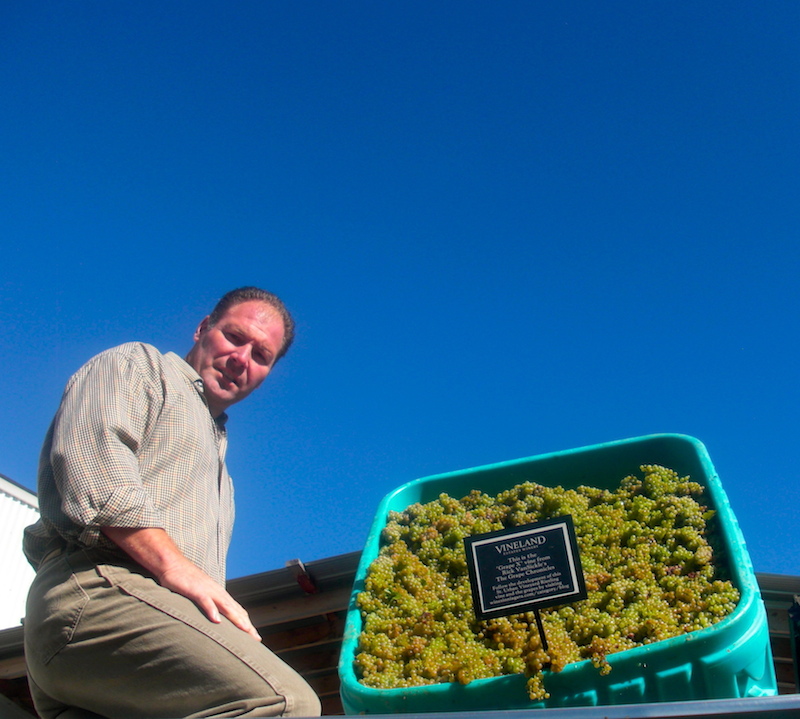




Comment here